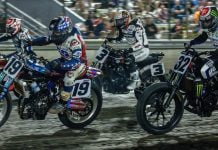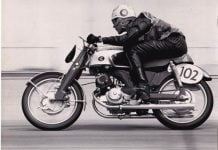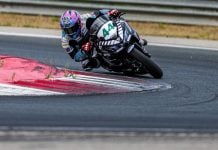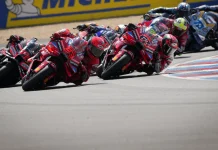From a press release issued by the AMA:
Single-bike Crash Analysis has Lessons for Motorcyclists
PICKERINGTON, Ohio — A new analysis of fatal motorcycle crashes in 1999 highlights several areas of major importance for motorcycling safety, the American Motorcyclist Association (AMA) reports.
In a report titled “Fatal Single Vehicle Motorcycle Crashes,” the National Highway Traffic Safety Administration (NHTSA) indicated that there are several factors that appear to contribute to motorcyclists’ deaths.
Topping the list is drinking and riding. While traffic safety officials note that it appears that fewer motorcyclists are drinking and riding than a decade ago, they also say alcohol was involved in the majority of single-vehicle motorcycle fatalities in 1999.
The report also indicated that speeding appears to be a factor in fatal motorcycle crashes, as well as inadequate braking and steering in crucial situations.
Other findings note that almost a third of the motorcyclists killed in 1999 didn’t have a proper motorcycle license; almost two-thirds of the fatal crashes happened at night; and 60 percent of the deaths occurred on curvy rural roads.
Plus, the analysis showed an increase in the number of traffic deaths among riders 40 and older, a statistic that mirrors the aging of the population in general. However, the largest single number of deaths remained among motorcyclists aged 20 to 29.
“This latest analysis illustrates some important safety areas that everyone concerned with motorcycling safety should consider,” said Edward Moreland, the AMA’s vice president for government relations. “The AMA has long stressed the need for motorcycle rider training, stricter licensing laws, appropriate riding gear and motorist-awareness campaigns, and we plan to renew our efforts in these areas as part of our overall strategy to improve motorcycling safety.”
Moreland said the latest information released by federal traffic safety officials also indicates the need for further research to find out the exact causes of motorcycle crashes so that safety programs can be put together to reduce the number of crashes.
“This latest information, while useful, is incomplete,” Moreland said. “What we need is comprehensive research to define the reasons for motorcycle accidents rather than a review of existing police report data, which may be faulty or incomplete.”
Last year, the AMA — along with the Motorcycle Safety Foundation, the Motorcycle Riders Foundation and other industry groups — succeeded in incorporating a motorcycle-accident study in the National Agenda for Motorcycle Safety. The AMA and others hope that federal officials will take the need for that research to heart.
The most recent comprehensive federal study of motorcycle accidents was published in 1980, and sampled accident data only in Southern California. That research, commonly called “The Hurt Report” because the lead investigator was Harry Hurt, became the authoritative resource on the causes of motorcycle crashes and finding ways to avoid them.
“No study of that scope has been done since that time,” Moreland said. “We can’t prevent what we don’t understand, and the only way to understand is to fully study why these fatalities happen. These latest figures only underscore the fact that it’s incumbent upon the NHTSA to fund significant research into motorcycle fatalities.”
© , Roadracing World Publishing, Inc.











